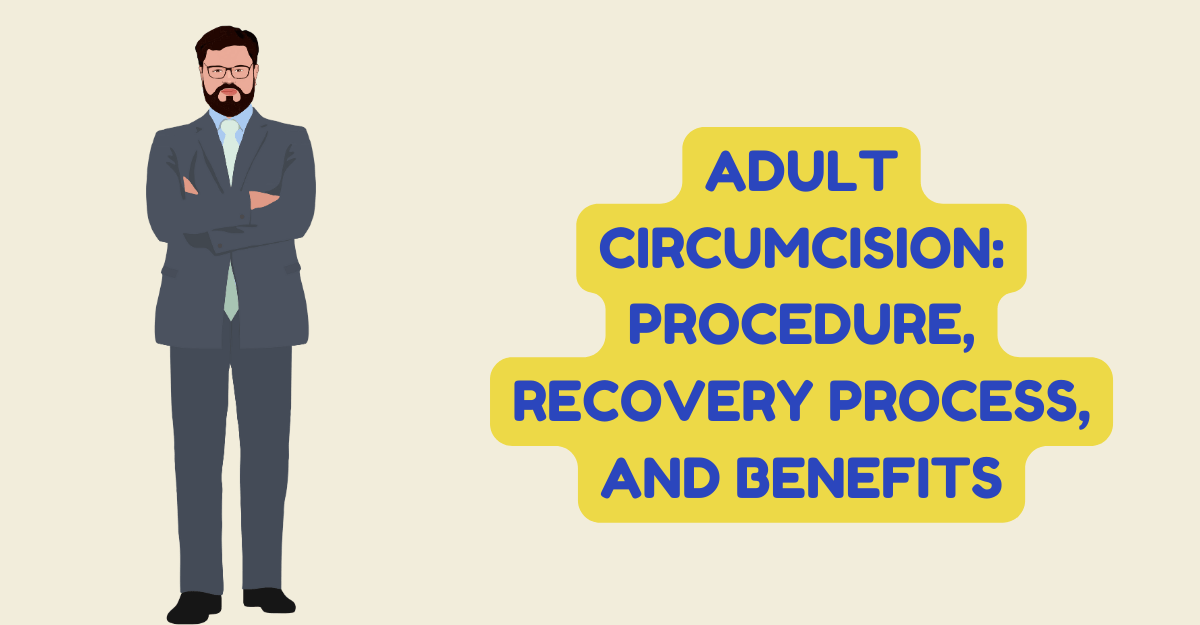
Adult Circumcision: Procedure, Recovery Process, and Benefits
Circumcision is a surgical procedure that involves the removal of the foreskin from the penis. While circumcision is commonly performed during infancy for cultural or religious reasons, some individuals may choose to undergo the procedure later in life. In this comprehensive guide, we’ll explore the procedure of circumcision, the recovery process, and the potential benefits it may offer.
Understanding the Procedure
Circumcision is typically performed as an outpatient procedure under local or general anesthesia. During the surgery, the foreskin is carefully removed from the penis, and the edges of the incision are stitched together to promote healing. Various surgical techniques may be employed, including the sleeve technique, dorsal slit technique, or the use of surgical devices.
Advancements in surgical technology have led to minimally invasive techniques for circumcision, such as laser circumcision or radiofrequency ablation. These techniques offer potential benefits, including reduced bleeding, shorter recovery times, and improved cosmetic outcomes. The choice of surgical technique depends on individual preferences, anatomical factors, and the recommendations of the healthcare provider.
Recovery Process and Postoperative Care
Following circumcision, proper postoperative care is crucial to promote healing and minimize complications. Most individuals can expect to resume normal activities within a few days to a week after the procedure. During the recovery period, it’s essential to follow any specific instructions provided by the healthcare provider, including wound care, activity restrictions, and follow-up appointments.
Practicing good hygiene is crucial during the healing process to prevent infections and promote optimal healing. Keep the genital area clean and dry, avoid tight clothing or restrictive underwear, and refrain from sexual activity until cleared by a healthcare provider. Additionally, monitor for any signs of infection and seek medical attention if necessary.
Benefits of Circumcision
There are several potential benefits associated with adult circumcision. One significant benefit is improved genital hygiene, as the removal of the foreskin eliminates potential areas for the accumulation of smegma—a mixture of dead skin cells and bodily fluids that can harbor bacteria. Circumcision may also reduce the risk of certain sexually transmitted infections (STIs) and urinary tract infections (UTIs).
Circumcision may offer cosmetic benefits, resulting in a smoother, streamlined appearance of the penis. Some individuals may also experience enhanced sexual satisfaction or reduced sensitivity, although individual experiences with sexual function may vary. Discussing potential benefits and considerations with a healthcare provider can help individuals make informed decisions about circumcision.
Additionally, circumcision has been associated with a reduced risk of penile cancer in some studies. By removing the foreskin, circumcision eliminates a potential site for the development of cancerous cells, reducing the likelihood of penile cancer. While the overall risk of penile cancer is low, circumcision may offer a preventive measure for individuals concerned about their long-term health and well-being. Consulting with a healthcare provider can provide personalized recommendations based on individual risk factors and medical history.
Considerations and Risks
Before undergoing circumcision, it’s essential to consider various factors and potential risks. Like any surgical procedure, circumcision carries certain risks and potential complications, including bleeding, infection, changes in sensation, or adverse reactions to anesthesia. Individuals with certain medical conditions or anatomical variations may be at increased risk of complications from circumcision.
Understanding the potential risks and implications of adult circumcision is essential for informed consent. It’s important to discuss any concerns or questions with a qualified healthcare provider and weigh the benefits against the potential drawbacks. Exploring alternative treatment options or seeking a second opinion may also be beneficial in making an informed decision about circumcision.
Seeking Guidance and Consultation
Navigating the decision to undergo circumcision requires careful consideration and consultation with a qualified healthcare provider. Discussing your medical history, concerns, and expectations with a healthcare provider can help determine if circumcision is the right choice for you. Additionally, exploring alternative treatment options or seeking a second opinion may be beneficial in making an informed decision about your healthcare.
Seeking guidance from a healthcare provider can provide personalized recommendations and support throughout the decision-making process and the journey of circumcision. By actively participating in the decision-making process and collaborating with healthcare providers, individuals can approach circumcision with confidence and clarity.
Circumcision is a surgical procedure that individuals may choose for various personal, medical, or cultural reasons. Understanding the procedure, recovery process, potential benefits, considerations, and risks associated with circumcision is essential for making informed decisions about healthcare. By exploring the comprehensive aspects of circumcision and seeking guidance from qualified healthcare providers, individuals can approach the procedure with confidence, clarity, and informed consent.






